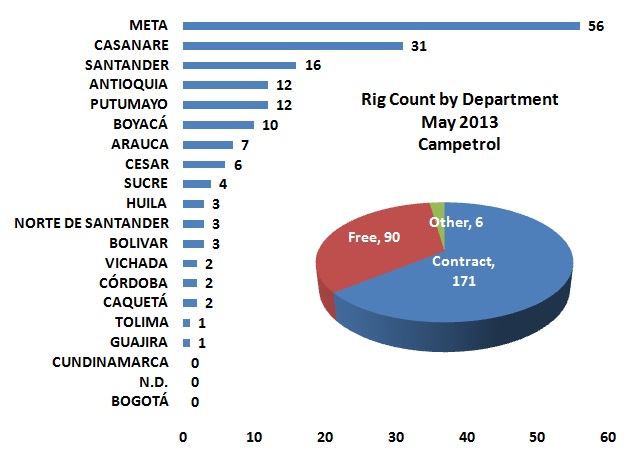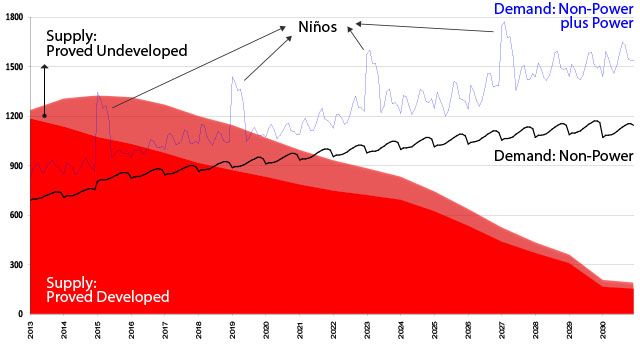Seismic tests to explore the eastern foothills of Casanare are allegedly affecting the water supply in rivers and streams and could impact local communities, says an environmental NGO.
Ecopetrol president Javier Gutierrez looks at 2013 with optimism both for the state oil firm’s prospects position but also for Colombia’s economic and political advances.

Drill rig counts have become controversial with Baker Hughes showing recent declines — suggesting something was not right — and the Ministry of Mines and Energy taking offense at the implied criticism. Campetrol’s counts are based on its members’ reports and, to the extent that they represent the universe of drilling companies, should be more representative.
Mexico’s Energy Secretary Pedro Joaquín Coldwell has embarked on a state trip which includes meetings to discuss the business model of Ecopetrol with Colombian officials, as well as attend an energy conference in Bogota and later a trip to Brazil.
Canadian oil producer Parex Resources expects to drill 30 new wells this year in order to continue expanding its production in Colombia and keep with its success rate to date of 70%, the company’s general manager Lee Distefano was quoted as saying.

Following a national debate as to whether Colombia has sufficient gas resources for the long term future, the Energy and Gas Regulation Commission (CREG) has issued resolutions clearing the path for natural gas imports starting in 2016.

Recently Colombia’s energy regulator, the CREG, issued an order to UPME — the Ministry of Mines and Energy’s think tank and research division — to look into the importation of Liquid Natural Gas, LNG.
The administrators of Colombia’s General Royalties System (SGR) hosted planning secretaries from the country’s departmental governments to discuss the accomplishments of the new royalty system in its first year and talk about its reach looking forward.
Natural gas producer and distributor Madigas says it will invest COL9B (US$4.77M) throughout Colombia this year with around COL4.5B of it focused in the Caldas Department.
Rural communities in Tibú, located in the Santander Norte department have erected barricades and organized protests which have 90% of Ecopetrol’s oil drilling and extraction activities stopped.